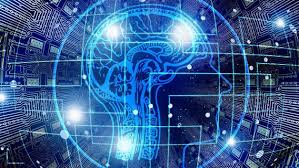The Latest in IT Tech: Innovations Shaping the Future
Technology is advancing at a rapid pace, and the world of Information Technology (IT) is no exception. From artificial intelligence to blockchain, new innovations are reshaping the way we work, communicate, and live. Let’s explore some of the latest trends in IT tech that are revolutionising industries and driving digital transformation.
Artificial Intelligence (AI)
AI is no longer just a concept from science fiction; it is now a reality transforming various sectors. Machine learning algorithms are being used to automate processes, analyse data at scale, and enhance decision-making capabilities. AI-powered chatbots provide instant customer support, while autonomous vehicles are set to revolutionise transportation.
Internet of Things (IoT)
The IoT ecosystem continues to expand as more devices become interconnected. Smart homes equipped with IoT devices allow for remote monitoring and control of appliances, enhancing convenience and energy efficiency. In industries, IoT sensors enable predictive maintenance and real-time monitoring of equipment performance.
Cybersecurity Innovations
With the increasing threat of cyber attacks, cybersecurity innovations are crucial for safeguarding sensitive data and digital assets. Technologies such as biometric authentication, zero-trust security models, and AI-driven threat detection systems are being deployed to strengthen defences against evolving cyber threats.
Blockchain Technology
Blockchain technology is revolutionising industries by providing secure and transparent transactional systems. Beyond cryptocurrencies, blockchain is being used for supply chain management, secure document verification, and decentralised finance applications. Its tamper-proof nature ensures data integrity and trust in digital transactions.
Cloud Computing Evolution
Cloud computing has evolved to offer more than just storage and computing resources. Edge computing brings processing power closer to end-users for faster response times, while serverless computing allows developers to focus on code without managing infrastructure. Multi-cloud strategies provide flexibility and scalability for businesses operating in diverse environments.
The Future of IT Tech
As technology continues to advance, the future of IT tech holds even more exciting possibilities. Quantum computing promises unparalleled processing power for solving complex problems, while 5G networks will enable ultra-fast connectivity for a wide range of applications. Augmented reality (AR) and virtual reality (VR) technologies are set to transform how we interact with digital content.
In conclusion, the pace of innovation in IT tech shows no signs of slowing down. Embracing these new technologies can unlock opportunities for businesses and individuals alike, driving progress towards a more connected and efficient future.
Top 8 Advantages of New IT Technology: Boosting Efficiency, Security, and Sustainability
- Enhanced Efficiency
- Improved Connectivity
- Enhanced Security
- Cost Savings
- Better Decision-Making
- Innovative Solutions
- Enhanced User Experience
- Environmental Benefits
Exploring the Challenges of New IT Technology: Security, Costs, Compatibility, Dependency, Obsolescence, and Ethics
- 1. Security Risks
- 2. Costly Implementation
- 3. Compatibility Issues
- 4. Dependency on Technology
- 5. Rapid Obsolescence
- 6. Ethical Concerns
Enhanced Efficiency
New IT technologies offer the significant advantage of enhanced efficiency by streamlining processes and automating tasks, ultimately boosting productivity levels. By leveraging these innovative tools, organisations can eliminate manual interventions, reduce human errors, and accelerate workflows. This increased efficiency not only saves time and resources but also allows employees to focus on more strategic and value-added activities, driving overall performance and competitiveness in today’s fast-paced digital landscape.
Improved Connectivity
Improved Connectivity is a significant advantage of new IT technologies. Innovations such as Internet of Things (IoT) and 5G networks have revolutionised how devices communicate, allowing for seamless connectivity and data exchange. With IoT, everyday objects can be interconnected to share information and automate processes, enhancing efficiency and convenience. The high-speed and low-latency capabilities of 5G technology further enable real-time communication and support a wide range of applications that benefit from instantaneous connectivity. These advancements in IT tech not only improve productivity but also pave the way for a more interconnected and digitally integrated world.
Enhanced Security
Enhanced Security: Cybersecurity innovations play a vital role in providing advanced protection against evolving cyber threats. With technologies such as biometric authentication, zero-trust security models, and AI-driven threat detection systems, organisations can strengthen their defences and safeguard sensitive data and digital assets from malicious actors. By staying ahead of the curve and implementing robust cybersecurity measures, businesses can mitigate risks and ensure the integrity of their systems in an increasingly digital landscape.
Cost Savings
Cloud computing and virtualisation technologies offer a significant advantage in cost savings for businesses by reducing infrastructure expenses. By leveraging these innovative IT solutions, companies can eliminate the need for extensive physical hardware setups, leading to lower operational costs associated with maintenance, upgrades, and energy consumption. The scalability and flexibility provided by cloud computing also allow businesses to pay only for the resources they use, further optimising their IT expenditure. Overall, embracing these new technologies not only streamlines operations but also contributes to long-term financial efficiency and sustainability.
Better Decision-Making
The advent of new IT technology, particularly in the realm of artificial intelligence, has significantly enhanced decision-making processes across various sectors. AI algorithms are capable of analysing vast amounts of data with remarkable speed and accuracy, uncovering patterns and trends that might be overlooked by human analysts. By providing valuable insights drawn from complex datasets, these algorithms enable businesses and organisations to make more informed decisions. This data-driven approach not only improves efficiency but also helps in identifying opportunities for growth and innovation, ultimately leading to more strategic planning and competitive advantage in the marketplace.
Innovative Solutions
Blockchain technology is heralded for its innovative solutions, providing secure and transparent mechanisms for a multitude of industries. By leveraging blockchain, businesses can enhance data integrity, streamline transactions, and foster trust among stakeholders. The decentralised nature of blockchain ensures that information remains tamper-proof and accessible only to authorised parties, paving the way for more efficient and reliable processes across diverse sectors. This pro of new IT tech signifies a paradigm shift towards greater accountability and efficiency in the digital age.
Enhanced User Experience
Enhanced User Experience is a significant advantage of new IT tech, as technologies such as Augmented Reality (AR), Virtual Reality (VR), and chatbots are transforming how users interact with digital content and services. AR and VR create immersive experiences that blur the lines between the physical and digital worlds, providing users with engaging and interactive environments. Chatbots, powered by AI, offer personalised assistance and instant responses, enhancing user satisfaction and efficiency. By leveraging these innovative technologies, businesses can deliver more intuitive and compelling user experiences that drive engagement and loyalty.
Environmental Benefits
Green IT initiatives associated with new IT technologies offer significant environmental benefits by promoting energy efficiency and sustainability in technology operations. By implementing eco-friendly practices such as virtualisation, efficient data centre management, and renewable energy sources, organisations can reduce their carbon footprint and contribute to a greener future. Embracing green IT not only helps in minimising energy consumption and operational costs but also demonstrates a commitment to environmental stewardship and corporate social responsibility. The integration of sustainable practices into IT operations showcases the potential of technology to drive positive change towards a more environmentally conscious world.
1. Security Risks
The rapid advancement of new IT technologies brings along a significant drawback in the form of security risks. These innovations frequently introduce vulnerabilities that cybercriminals can exploit, jeopardising the security of sensitive data and compromising user privacy. As organisations and individuals embrace cutting-edge technologies, they must remain vigilant and implement robust cybersecurity measures to safeguard against potential threats and breaches.
2. Costly Implementation
Adopting new IT technologies can present a significant challenge in terms of cost. The implementation of cutting-edge IT solutions often demands substantial investments in infrastructure, employee training, and ongoing maintenance. This financial burden can put a strain on budgets, especially for small businesses or organisations with limited resources. The high cost of implementing new IT tech may deter some entities from embracing these innovations, despite the potential long-term benefits they offer. Careful consideration and strategic planning are essential to mitigate the financial impact of integrating new technologies into existing systems.
3. Compatibility Issues
Integrating new IT technologies with existing systems and software can often present a significant challenge due to compatibility issues. The introduction of new tech may not seamlessly align with the current infrastructure, leading to disruptions in operations and inefficiencies in workflow. Organisations may face issues such as data transfer errors, software conflicts, and system downtime as they strive to integrate the latest innovations with their legacy systems. Addressing compatibility concerns is crucial to ensuring a smooth transition and maximising the benefits of new IT tech adoption.
4. Dependency on Technology
Dependency on technology is a significant con of new IT tech. Overreliance on technological solutions can lead to decreased human interaction, as individuals may prefer digital communication over face-to-face interactions. Automation driven by IT tech could potentially replace human jobs, leading to job displacement and economic challenges. Striking a balance between leveraging technology for efficiency and preserving essential human connections is crucial to mitigate the negative impacts of excessive dependency on IT tech.
5. Rapid Obsolescence
One significant drawback of new IT technologies is the rapid obsolescence they bring. The fast-paced nature of IT innovation often results in cutting-edge technologies swiftly becoming outdated, necessitating frequent upgrades or replacements. This constant cycle of obsolescence can lead to significant financial investments and operational disruptions for individuals and businesses alike, as they strive to keep up with the latest advancements in technology to remain competitive and efficient in the ever-evolving digital landscape.
6. Ethical Concerns
Emerging technologies, particularly artificial intelligence, present significant ethical concerns that must be addressed as they become more integrated into society. One major issue is the potential for bias in algorithms, which can lead to unfair or discriminatory outcomes if not carefully monitored and corrected. Additionally, the vast amounts of data required to train AI systems raise serious questions about data privacy and the potential for misuse of personal information. Furthermore, as automated systems make decisions that impact individuals’ lives, determining accountability becomes a complex challenge. It is crucial to establish clear ethical guidelines and regulatory frameworks to ensure these technologies are developed and deployed responsibly, safeguarding individuals’ rights and promoting fairness.


